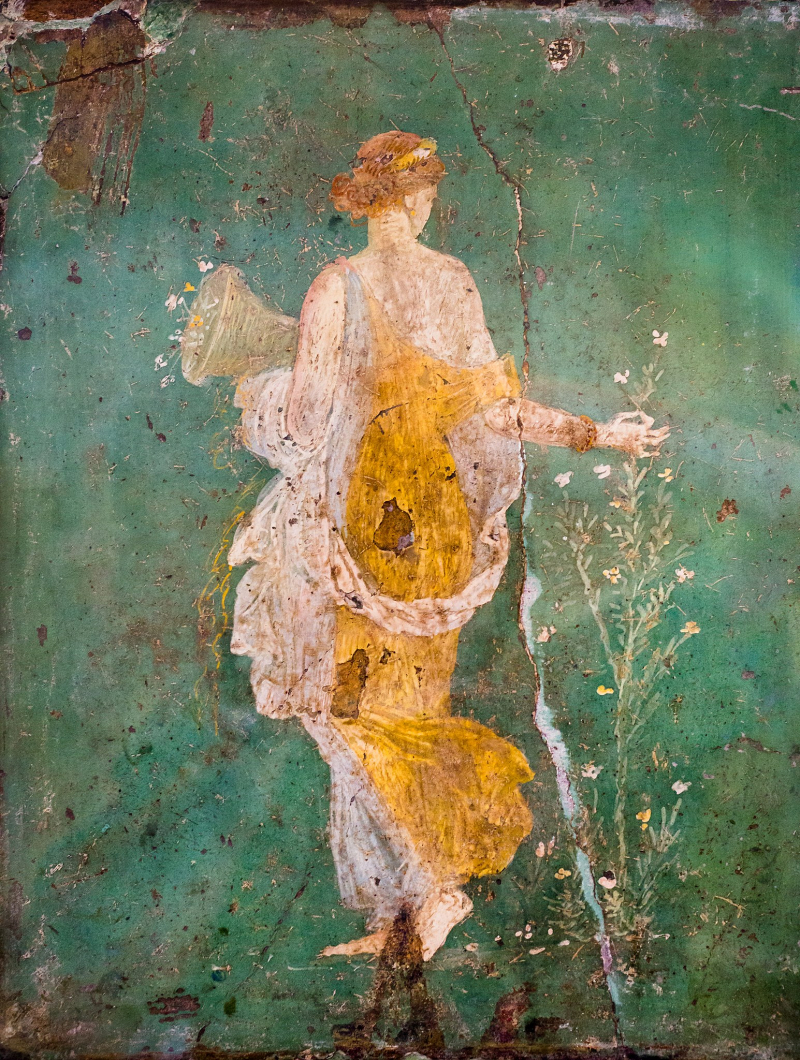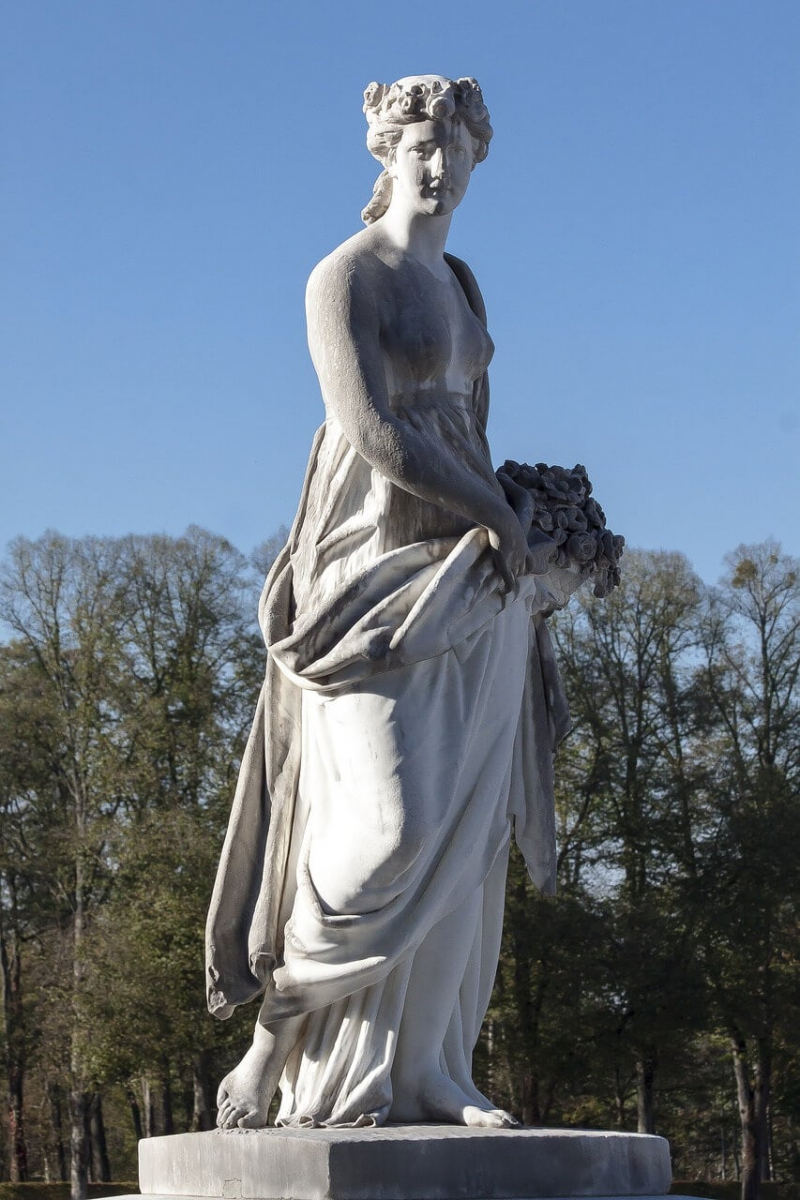Flora

Flora is a Roman goddess of flowers and the spring season, as well as a symbol of nature and flowers (especially the mayflower). While she was otherwise a minor figure in Roman mythology, as one of several fertility goddesses, her affiliation with spring, as well as her function as goddess of youth, gave her special significance with the arrival of spring. She was one of the fifteen deities that had their own flamen, the Floralis, which was one of the minor flames. Chloris is her Greek counterpart.
Flora is derived from Proto-Italic *flōsā (goddess of flowers), which is derived from Proto-Italic *flōs ('flower'; cf. Latin flōs, flōris 'blossom, flower'). It is cognate with Fluusa, the Oscan goddess of flowers, indicating that the religion was more extensively recognized among Italic peoples. The name is derived from the Proto-Indo-European *bʰleh₃ōs ('blossoming').
Her Floralia festival, held between April 28 and May 3, represented the regeneration of the cycle of life, drinking, and flowers. The festival was initially held in 240 B.C.E., and she was given a temple in 238 B.C.E. on the suggestion of the Sibylline writings. Five days of farces and mimes - ithyphallic, and incorporating nudity when called for - were performed at the festival, with the men dressed in flowers and the women donning typically forbidden gay costumes - followed by the sixth day of goat and hare hunting. Another (rose) celebration was conducted in her honor on May 23.
Flora's Greek equivalent is Chloris, a nymph. Flora is married to Favonius, the wind god also known as Zephyr, and Hercules is her companion. Flora rose to greater prominence in the Renaissance humanists' neo-pagan resurrection of Antiquity than she had in ancient Rome.













